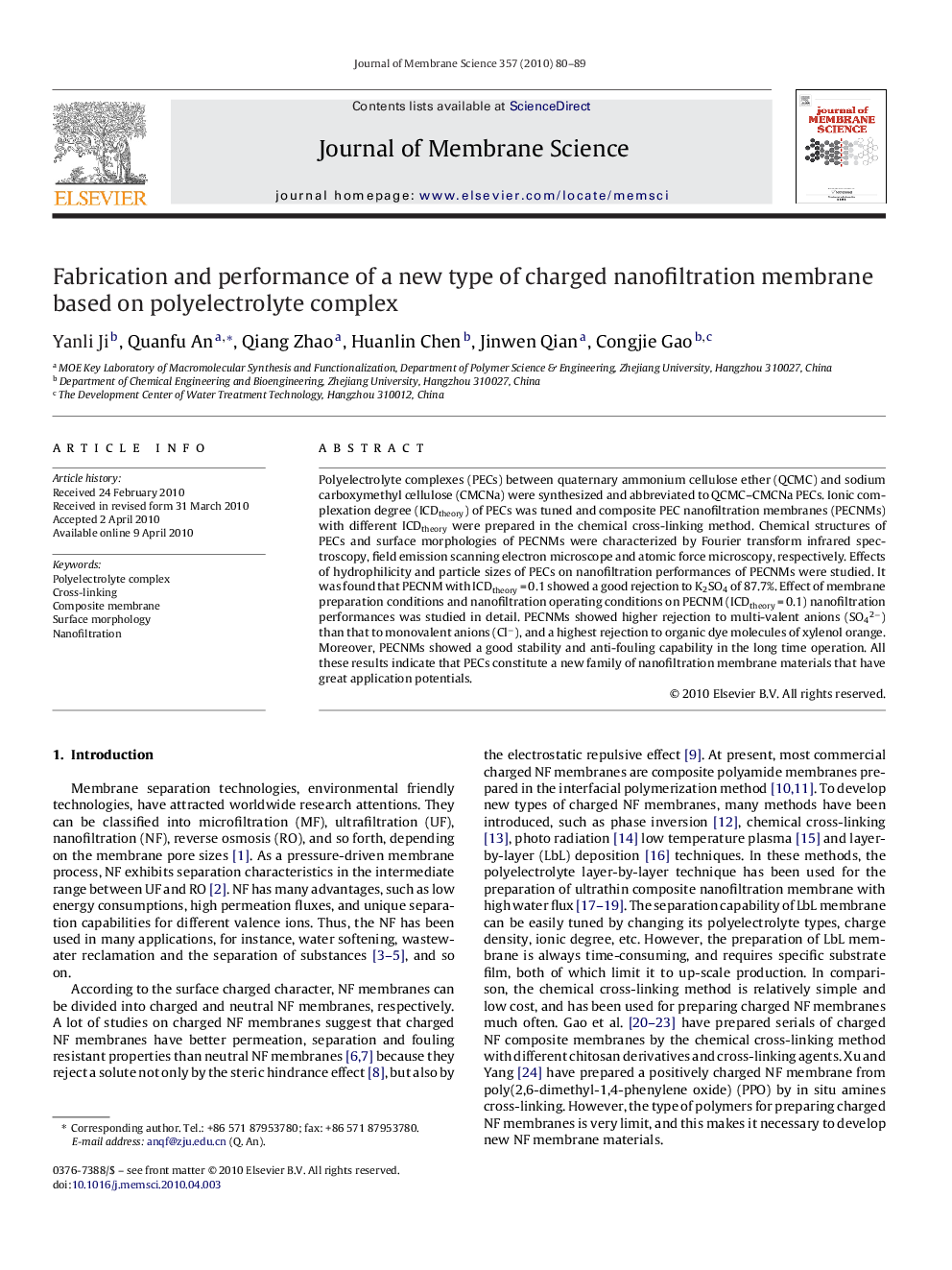| Article ID | Journal | Published Year | Pages | File Type |
|---|---|---|---|---|
| 636291 | Journal of Membrane Science | 2010 | 10 Pages |
Abstract
Polyelectrolyte complexes (PECs) between quaternary ammonium cellulose ether (QCMC) and sodium carboxymethyl cellulose (CMCNa) were synthesized and abbreviated to QCMC-CMCNa PECs. Ionic complexation degree (ICDtheory) of PECs was tuned and composite PEC nanofiltration membranes (PECNMs) with different ICDtheory were prepared in the chemical cross-linking method. Chemical structures of PECs and surface morphologies of PECNMs were characterized by Fourier transform infrared spectroscopy, field emission scanning electron microscope and atomic force microscopy, respectively. Effects of hydrophilicity and particle sizes of PECs on nanofiltration performances of PECNMs were studied. It was found that PECNM with ICDtheory = 0.1 showed a good rejection to K2SO4 of 87.7%. Effect of membrane preparation conditions and nanofiltration operating conditions on PECNM (ICDtheory = 0.1) nanofiltration performances was studied in detail. PECNMs showed higher rejection to multi-valent anions (SO42â) than that to monovalent anions (Clâ), and a highest rejection to organic dye molecules of xylenol orange. Moreover, PECNMs showed a good stability and anti-fouling capability in the long time operation. All these results indicate that PECs constitute a new family of nanofiltration membrane materials that have great application potentials.
Related Topics
Physical Sciences and Engineering
Chemical Engineering
Filtration and Separation
Authors
Yanli Ji, Quanfu An, Qiang Zhao, Huanlin Chen, Jinwen Qian, Congjie Gao,
